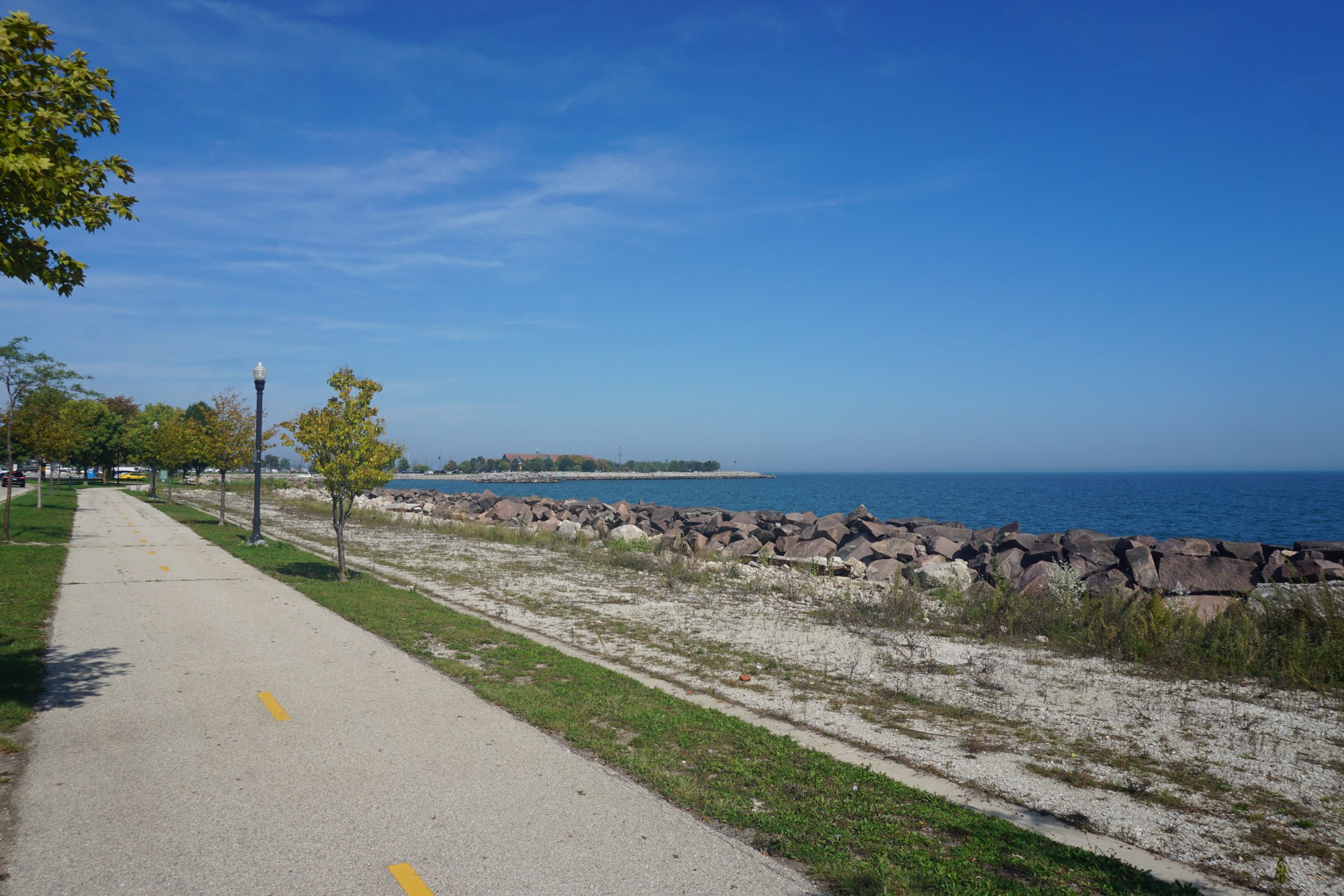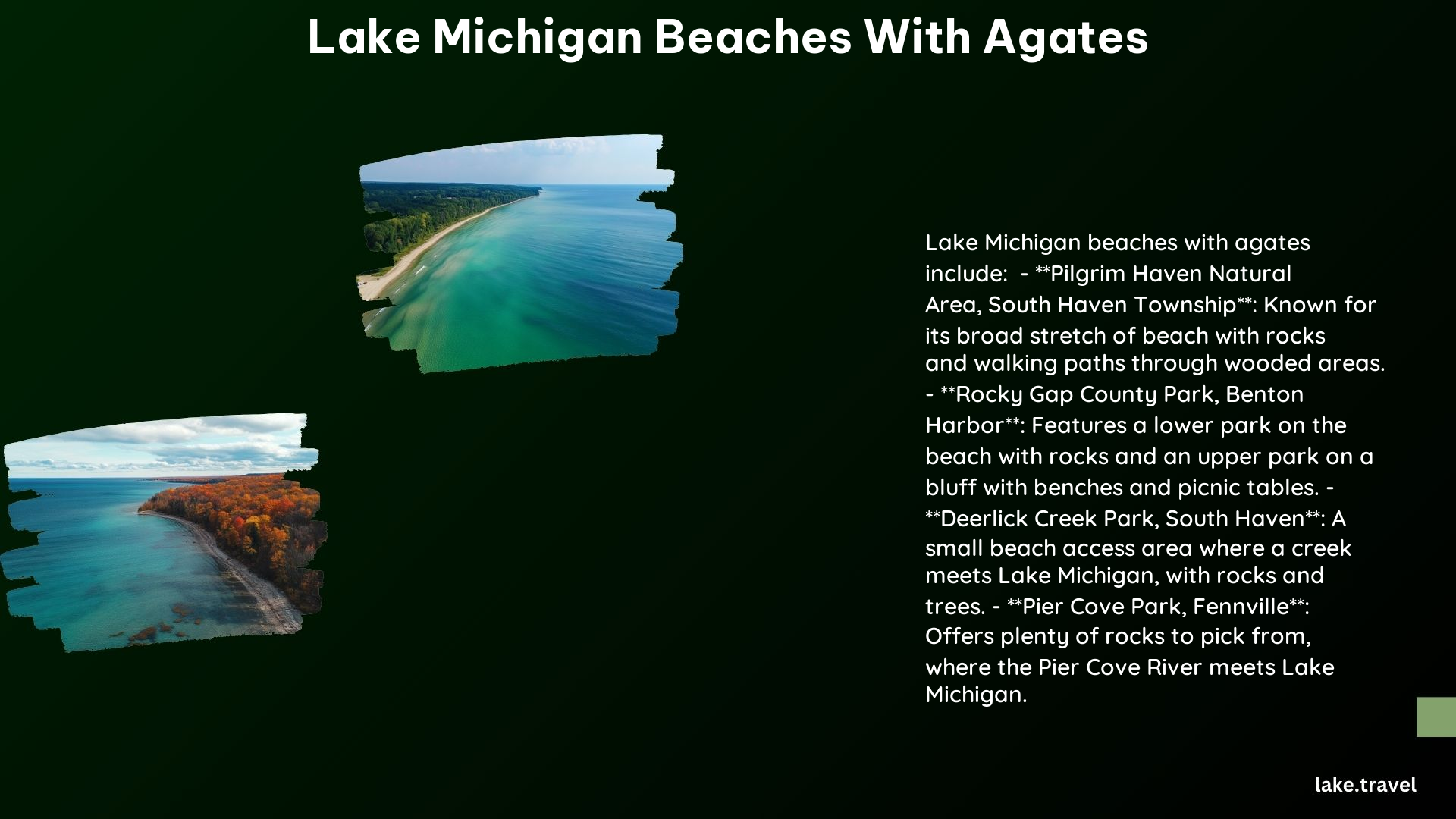Lake Michigan beaches are renowned for their diverse array of rocks and minerals, including the captivating agates. These semi-precious gemstones, with their unique banded patterns and vibrant colors, have long been a source of fascination for beachcombers and rockhounds alike. In this comprehensive guide, we’ll explore the best beaches for finding Lake Michigan agates, provide tips for identifying them, and share insights on the optimal times to search for these natural treasures.
Best Beaches for Lake Michigan Agates

-
Grand Marais: Situated on the eastern shore of the Upper Peninsula, Grand Marais is a prime location for agate hunting. The beaches east and west of Copper Harbor are also popular spots for rockhounds.
-
Peterson Park: Located in the Northwestern Lower Peninsula, Peterson Park is a renowned destination for finding fossils, including agates.
-
Christman Park: Another popular spot in the Northwestern Lower Peninsula, Christman Park is a favorite among agate enthusiasts.
-
Sleeping Bear Dunes National Lakeshore: This iconic national park along the eastern shore of Lake Michigan offers a diverse array of beaches, each with the potential to yield stunning agates.
-
Ludington State Park: Known for its picturesque sand dunes and pristine beaches, Ludington State Park is a hidden gem for agate hunters.
Identifying Lake Michigan Agates

Lake Michigan agates are easily recognizable by their distinctive features:
-
Appearance: These semi-precious stones are characterized by their irregular, spherical shape and iron-rich bands of color, often displaying shades of red, orange, and yellow.
-
Feel: Agates are dense and smooth, with a waxy texture when rubbed.
-
Pitted Appearance: Unlike many other types of rocks, agates often have a pitted surface, with a completely smooth natural appearance being relatively rare.
Best Times to Find Lake Michigan Agates
The optimal time for agate hunting on Lake Michigan beaches varies throughout the year:
-
Spring: The spring season is considered the best time for rockhounding, as the winter’s ice and snow push rocks further up onto the shore. Later in the season, wave action and winds can bury the rocks under sand.
-
Fall: The autumn months can also be productive for agate hunters, as storms and high waves can uncover new deposits along the shoreline.
Tips and Reminders
When exploring Lake Michigan beaches for agates, it’s important to keep the following in mind:
-
Rockhounding Regulations: While most Michigan State Parks allow rockhounding and beachcombing, there is a state law that limits the collection of common variety rocks, stones, minerals, and invertebrate fossils to 25 pounds per person per year.
-
Respect the Environment: Be sure to respect fellow beachgoers and the environment by not leaving trash behind and following any local regulations.
Additional Resources
For those interested in delving deeper into the world of Lake Michigan agates and rockhounding, consider the following resources:
-
Rockhounding Guides: Consult guides like the Michigan Rock Hunting Guide for more detailed information on rockhounding in the state.
-
Online Communities: Join online communities like the Great Lakes Rocks and Minerals Facebook group to connect with other rockhounds and share knowledge.
Conclusion
Lake Michigan’s beaches are a treasure trove for agate enthusiasts, offering a unique and captivating experience for those willing to explore. By understanding the best locations, identifying characteristics, and optimal times to search, you can embark on a rewarding journey to uncover these natural wonders. Remember to respect the environment and follow local regulations, and you’ll be well on your way to building an impressive collection of Lake Michigan agates.
